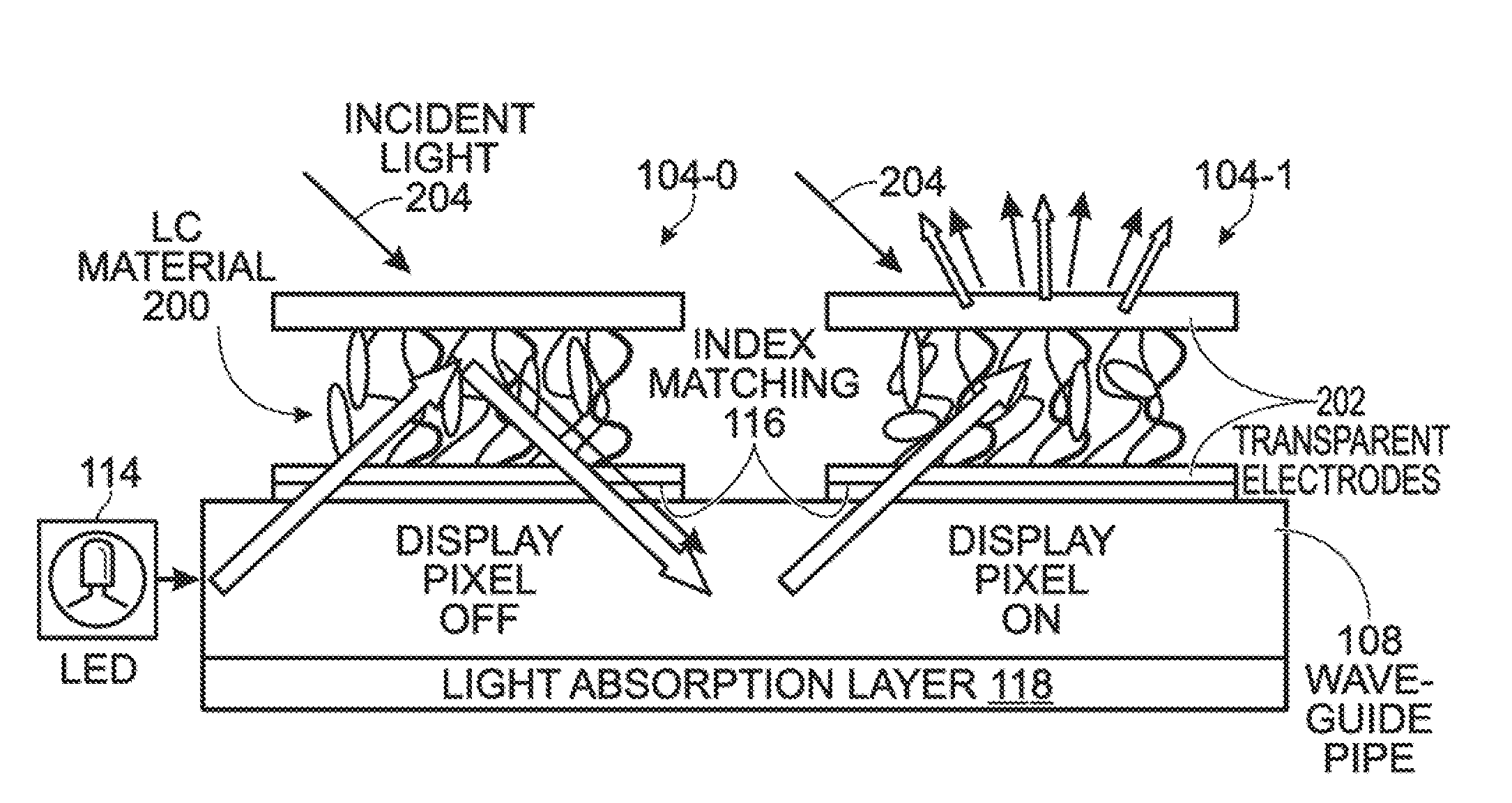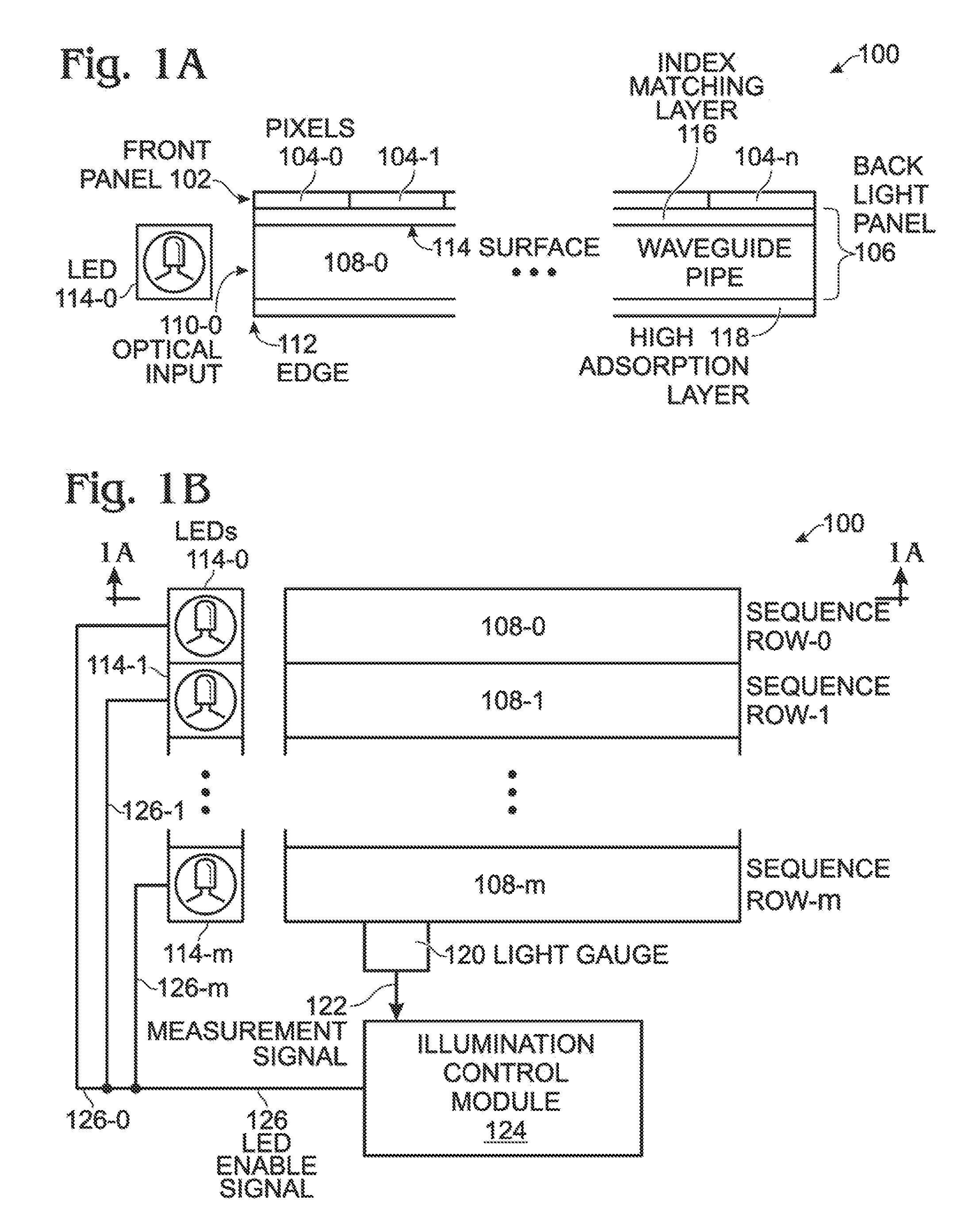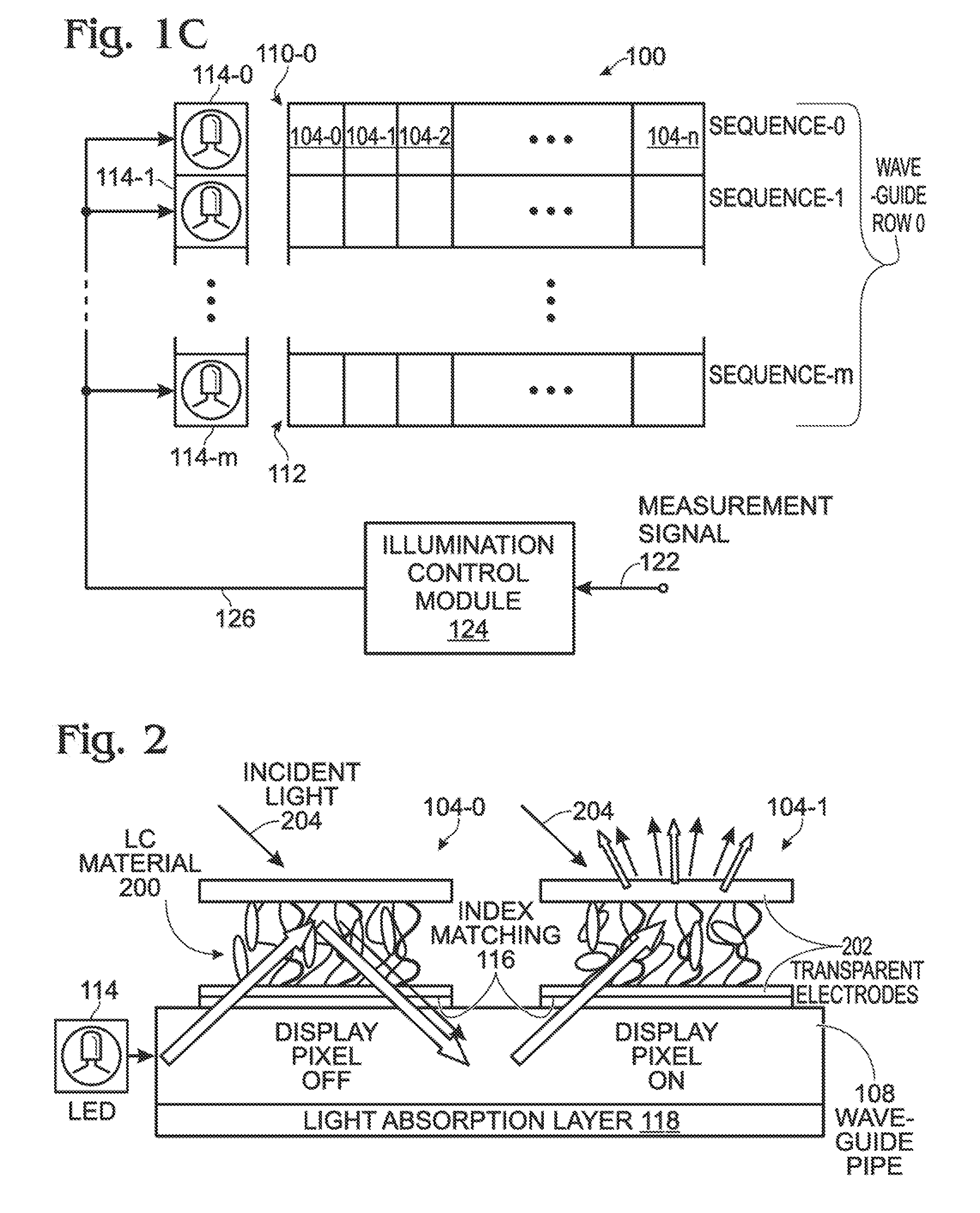Scattering Tunable Display Using Reflective and Transmissive Modes of Illumination
a technology of transmitsive modes and tunable displays, applied in static indicating devices, optics, instruments, etc., can solve the problems of high cost of implementation, inability to use, and conventional backlight designs such as compact fluorescent lamps (cfl) can not be used, so as to achieve dramatic reduction of design and algorithm development, and the effect of keeping power consumption low
- Summary
- Abstract
- Description
- Claims
- Application Information
AI Technical Summary
Benefits of technology
Problems solved by technology
Method used
Image
Examples
Embodiment Construction
[0024]FIGS. 1A, 1B, and 1C are respectively, a partial cross-sectional view and two plan views of a scattering tunable display using reflection and edge-lit waveguide transmission modes of illumination. The display 100 comprises a front panel 102 with an array of selectable display pixels 104 arranged in a plurality of sequences. Shown are pixels 104-0 through 104-n in each sequence. Also shown are sequences 0 through m, where n and m are integer variables not limited to any particular value. A backlight panel 106 includes a plurality of edge-coupled waveguide pipes 108 formed in a plurality of rows. Shown are rows 0 through m (waveguide pipes 108-0 through 108-m), with each waveguide pipe row being associated with a display pixel sequence. In other aspects not shown, a waveguide row may be associated with a plurality of adjacent sequences. Each waveguide pipe 108 has an optical input 110 connected to an edge 112 and an optical output surface 114 underlying a corresponding display p...
PUM
| Property | Measurement | Unit |
|---|---|---|
| thickness | aaaaa | aaaaa |
| time | aaaaa | aaaaa |
| time | aaaaa | aaaaa |
Abstract
Description
Claims
Application Information
 Login to View More
Login to View More - R&D
- Intellectual Property
- Life Sciences
- Materials
- Tech Scout
- Unparalleled Data Quality
- Higher Quality Content
- 60% Fewer Hallucinations
Browse by: Latest US Patents, China's latest patents, Technical Efficacy Thesaurus, Application Domain, Technology Topic, Popular Technical Reports.
© 2025 PatSnap. All rights reserved.Legal|Privacy policy|Modern Slavery Act Transparency Statement|Sitemap|About US| Contact US: help@patsnap.com



